French military leader Napoleon Bonaparte once said: “History is a set of lies, agreed upon.”
Should you believe the history books?
What's history for?
We all have to study history at some point in our lives, but why? Does what happened in the past actually matter? And how is it relevant to our lives today?
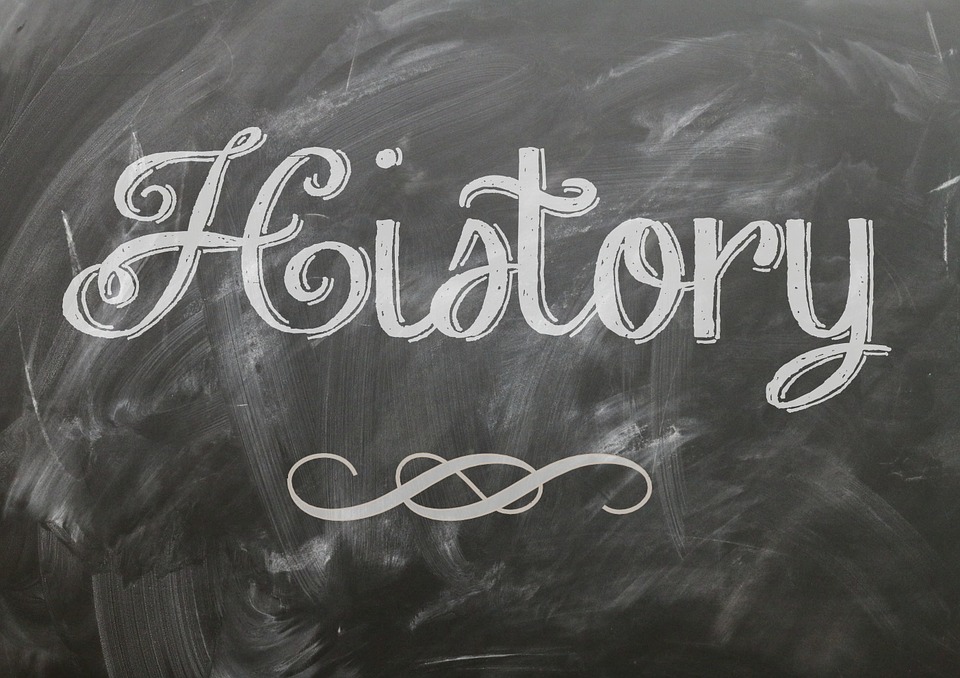
If you were sitting in an American classroom in the 1950s, learning about the Cold War, you might not have been Stalin’s biggest fan. After all, your teachers would likely say he was pretty much responsible for the whole thing - trying to take over eastern Europe and spread Communism across the world.
Your teacher would also have pointed out how aggressive Stalin was at the 1945 Potsdam Conference (where he met with UK and US leaders to plan how to establish order and peace in post-war Europe). And how unreasonable his demands were, wanting huge amounts of money and power to be given to Soviet Russia.
But fast forward a decade or so - you’re sitting in the same classroom, still learning about the Cold War, but now it’s the late 1960s. At this point, you’d be reading about America’s desire to have greater economic control over Europe and how US President Truman had been far too inflexible and suspicious of Soviet Russia at the Potsdam Conference. You’d be taught that the US needed to acknowledge its part in triggering the war and consider the wider picture - wasn't Stalin just acting in defence, given that his country had lost about 25 million people as a result of World War II?
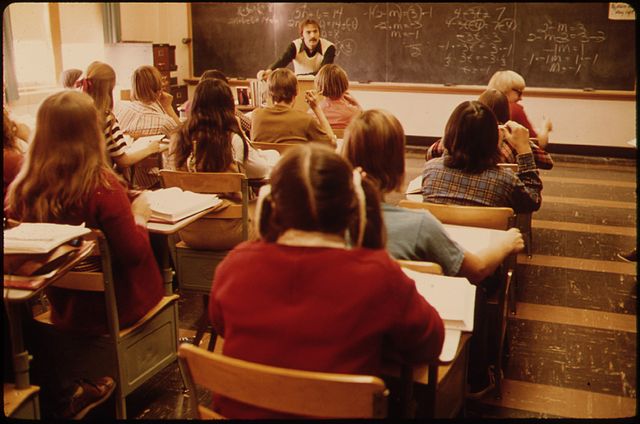
Classroom in Minnesota, 1974. Image credit: David Stroble via Wikicommons
And what about that same classroom in the 1990s? By this stage most history books had pulled out of the blame game, saying that the Cold War wasn’t the fault of one person or even one country, it was just an inevitability - thanks to the ideological differences between the eastern and western parts of the world.
They were even questioning whether it was helpful to teach that the Cold War started in 1945 - after all, weren’t its origins really in the 1917 Russian Revolutions and the particular political climate that produced?
The point is, our retelling of what’s happened in the past is constantly changing - history isn’t just a settled set of facts. But what exactly is it that affects our interpretations of the past?
It depends on our evidence
Once an event is far enough in the past that no one who was actually there is still alive, we can only rely on evidence - photos, historical records, diary entries, newspaper clippings, etc. Which makes historians a bit like detectives - they search for clues to help us paint a picture of the past. But, just like in any good detective story, there can often be misleading evidence.
Sometimes an account might be incorrect - either because something got reported wrongly by accident, or because someone purposely tried to cover up a particular event or action. That could lead a historian down the wrong path. Or it might be that there just isn’t very much evidence about a particular historical event, so we don’t know the whole story.
Looking at the Cold War example again, historians’ opinions changed quite a bit after 1991 when the Soviet Union collapsed because a huge archive of records (Archive of the Soviet Communist Party and Soviet State) that had previously been kept secret were suddenly released. So they had a whole bunch of new evidence to help them better understand what happened.
Historians have perspectives too
Imagine that you’re standing opposite a friend and you draw a number six on the floor between you. You ask them what number it is - they say a nine. Which one of you is right? The answer is that you both are - it just depends on your perspective.
And the same is true of historians - they work hard to be objective, but ultimately they’re only human and their personal perspective will affect how they look at the evidence.
In Britain till the 1970s most classrooms had big maps showing the extent of the British empire, with different countries coloured pink to show how it dominated the world and how great it was (see example pictured below). Schools were expected to celebrate Commonwealth Day, previously called Empire Day, as late as the 1980s. How do you think people taught this will relate to the British Empire today?
Historians whose families came from different parts of the world that were part of the British Empire, like India and Jamaica, are likely to have different perspectives. Their families will have experienced things like violent repression, a lack of rights and discrimination in the Empire and racism when they arrived in the UK. How might this impact their perspective on British history and Britain today?
Both of these are informed by different experiences. Whose experiences should we consider when we think about who writes history books?
Are there any other examples you can think of where a historian’s experiences, perspectives or personal beliefs might affect their work? How do you think this change what we read?
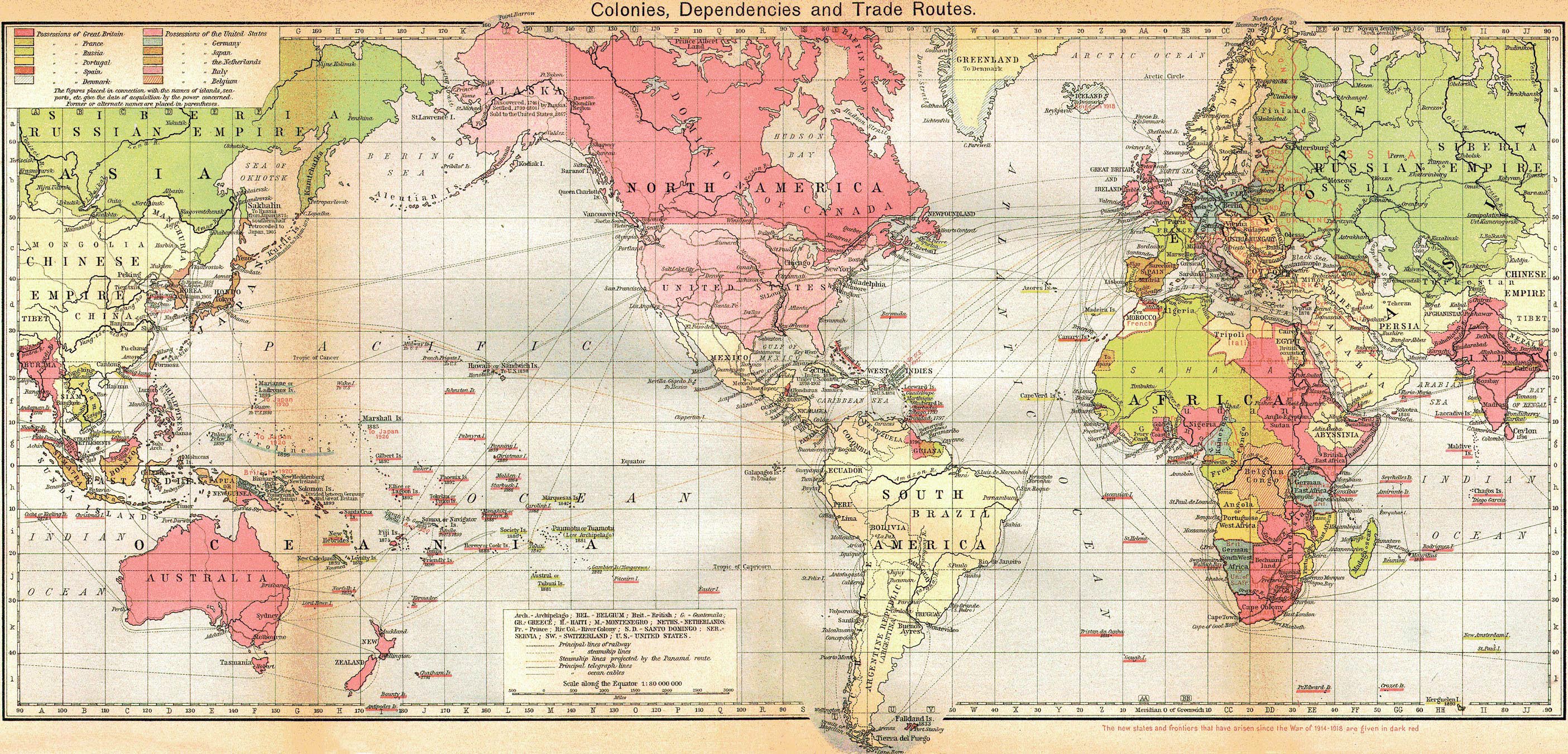
We’re affected by the society we live in
Historical events also don’t happen in a vacuum - they happen in a specific place at a specific time. And the particular cultural context surrounding an event can have a huge impact on how we interpret and write about it. This is certainly clear if we go back to those different perspectives on the Cold War.
Just after WWII people were still shell-shocked by all the violence, and doing anything risky - like questioning leaders who were still alive and in charge - just wasn’t appealing. Hence the America-loving/Stalin-hating view of 1950s history teachers.
But then America’s determination to fight against Communism grew out of control and turned inwards, resulting in many innocent Americans being investigated for possible Communist ties. Plus, they went to war in Vietnam, a brutal conflict that many people felt they shouldn’t have been involved in. Suddenly, the US government wasn’t so heroic, they were just power hungry and increasingly authoritarian, and many people (including prominent academics and historians) began to question them. This led to the view of the 1960s history books that placed more of the blame at America’s door.
So, our view of history is affected by what evidence we have and how we interpret that evidence, the personal perspectives of our historians and their motivation for writing and the country and culture in which historical records are created. No wonder it’s not straightforward!
Ultimately, history is a complex mix of opinions, ideas, beliefs and motives - it’s not really a collection of facts, it’s an unfolding set of stories about the past. But whose version of those stories should we believe?
French military leader Napoleon Bonaparte once said: “History is a set of lies, agreed upon.”
Photoshopping history
Images can have a powerful effect on our view of a person, situation, or event. So it’s sort of understandable that when there isn’t an existing photo that communicates the message people want to send, they just create one. Thanks to digital tools such as Photoshop we’re pretty used to fake pictures flying around the internet - but image editing isn't a new thing...
A brave dictator?

For a dictator, image is everything. The first photo does a lot to encourage a heroic vision of former Italian Prime Minister Benito Mussolini, making him seem strong and inspiring faith in his ability to lead his nation in a time of war (the photo was released in 1942, in the middle of World War II). But the original picture tells a slightly different story - a grown man being held safely by a stable hand, who was later edited out. If you were trying to show the world a brave conqueror, which image would you go for?
Upside-down Bush

Thanks to 24-hour news outlets, bloggers and constant updates on Twitter, the media is now more influential than ever when it comes to shaping our perspectives of those in power. And whatever the truth is about former US President George Bush’s intellect, he certainly gained a reputation in the media for being a little bit dim. Keeping this perception going was a good way to undermine his presidency for those who disagreed with his politics, so it’s no surprise that images like the above were often put out, making Bush look stupid. However, in the original, unedited photo, the book in his hands is the right way up. So was Bush really as dumb as the media made out, or did it just suit what we already thought we knew about him?
Stalin’s airbrush

Soviet Union dictator Joseph Stalin seemed to like the motto ‘out of sight, out of mind’ - at least that’s what these photos suggest. The first picture shows him walking and talking quite happily with one of his commissars, Nikolai Yezhov but then the second photo shows Yezhov airbrushed out. To give some context, Yezhov was one of Stalin’s chiefs of the secret police (NKVD) who had been responsible for the arrest of c. 1.5 million people during the Great Terror of 1937-8. He enjoyed significant praise in Soviet propaganda during that period. However, he later fell out of favour and Stalin wanted to remove any evidence that they’d ever been on good terms. The original photo was taken in April 1937 and the edited version was released in 1940, following Yezhov’s execution. It served as a pretty good warning not to get on the wrong side of Stalin - cross him and he’d just remove you from history!
Misfiring missiles

In 2008 Iran conducted a missile test designed to show off their weapons capability. Tensions were already escalating internationally over how much nuclear power Iran had and they wanted to show the strength of their military. However, one of the missiles misfired, as you can see in the first photo. But it was the second photo, doctored to look as if all four missiles launched successfully, that made the papers. Wonder why?
Misleading smiles
Irish artist Matt Loughley changed black and white pictures of Khymer Rouge prisoners in the Tuol Sleng prison in Cambodia in the 1970s. Loughley changed these pictures from black and white to colour, and changed the facial expressions to smiles. He said he wanted to “humanise” the victims. In power between 1975 and 1979, the regime killed two million people. More than 15,000 people died in the Tuol Sleng prison. Loughrey was accused of falsifying history. Cambodia’s Ministry of Culture even said that he affected “the dignity of the victims” by altering the images. What do you think?
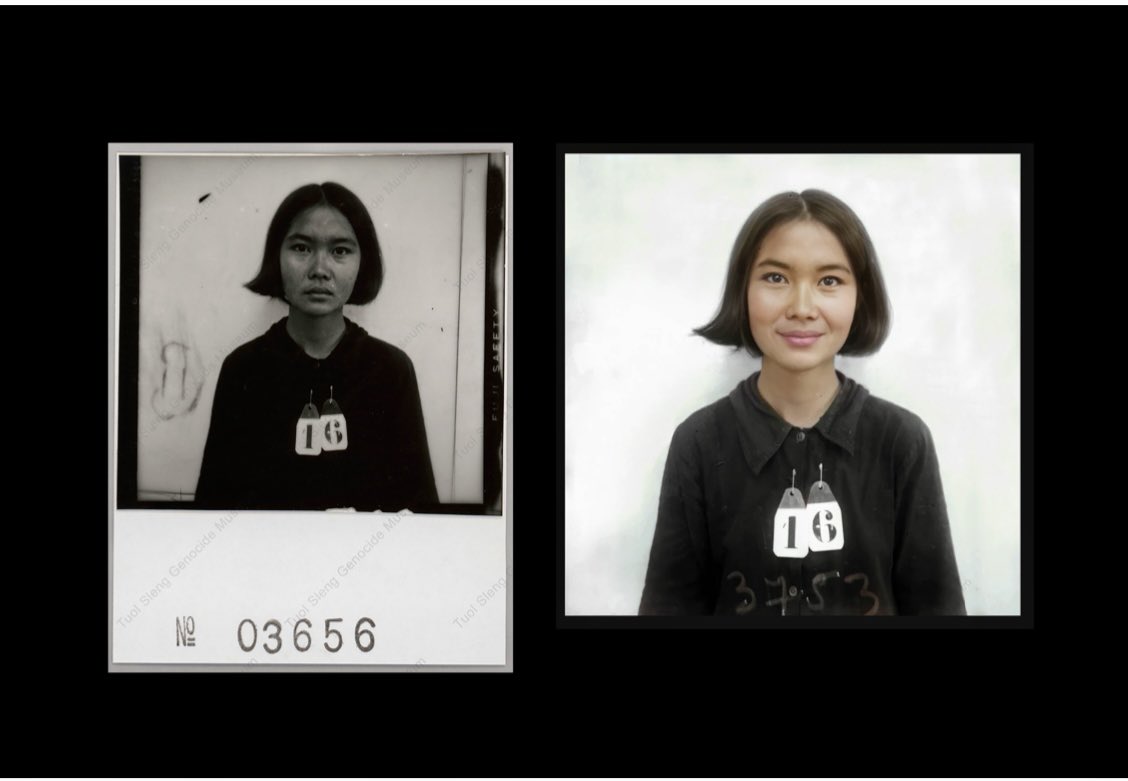
The anti-war hoax
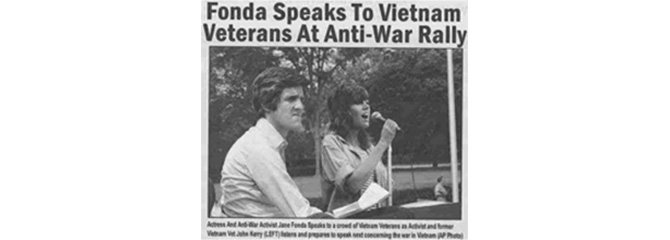
This photo is a fake - but it’s a fake that when released in 2004, nearly destroyed former US Secretary of State John Kerry’s presidential campaign. It showed him standing alongside hardline anti-war activist Jane Fonda and the headline said they were both speaking at an anti-war rally. Fonda was known for being against the Vietnam War and her views upset a lot of Americans - but Kerry had completed a significant period of service in the military, including fighting in Vietnam, and his popularity as a politician was in part because of his pro-war stance. So it’s likely that this picture was faked by his enemies. Although it was eventually proved that the image was actually two different shots edited together and that Kerry had not been anywhere near Fonda’s anti-war rally, it still did great damage to Kerry’s presidential campaign.
Black history - the lost pages of our past
English rapper and poet Akala talks about how so much of the history of Africa (and black people in general) has been distorted - and why we need to change what we teach about black history.
5 famous diaries - but can they be trusted?
- Anne Frank
- Quite possibly one of the most famous diaries in history, Anne Frank’s account of her concealment from the Nazis doesn’t just tell us about life as part of a Jewish family in hiding - it’s also a first-hand account of how it felt to be a young girl living in cramped conditions juggling the constant fear of being found, the frustration of having no privacy and her aspirations to become a writer. It’s renowned for offering a very real, personal glimpse into a sobering period of history. But just how accurate is it? We now know that Anne actually rewrote a lot of her diary in 1944, even deleting entire passages, after she heard on the radio that the Dutch government wanted to collect diaries and other important documents after the war ended to be preserved for future generations. That doesn’t mean that she just made things up - but if you knew you were writing for an audience, would you portray things in exactly the same way as if you were just writing for yourself? Plus, it wasn’t just Anne who was careful about what the diary said. Otto Frank, her father, edited the diaries for publication in 1947. He moved parts around, corrected bits and cut out others. Otto removed some hurtful references to his wife, Anne’s mother, and Anne’s unkind comments on their marriage, most likely in consideration of his late wife who had died in Auschwitz. Otto also removed sexual content from the diary: “dirty jokes”, comments on his visits to Parisian brothels, and Anne talking about her attraction to other girls. Why do you think he did this? What difference does this make to how we read the diary? How much should people be able to protect their own privacy and their own family history?
- Mother Teresa of Calcutta
- Mother Teresa was a devout Catholic and is considered to be one of the greatest humanitarians of the 20th century. She lived in India and dedicated her life to helping poor, sick and dying people in the city of Calcutta. She was awarded the Nobel Peace Prize in 1979 and was even made a saint by the Pope in 2016 - her life of service and her religious devotion have been an inspiration to people all over the world. But her personal diaries, discovered ten years after her death, reveal a different story. Despite all the work she did in the name of God, her diaries show she had profound doubts about her faith for over 50 years, which she hid from those around her. One entry says, “Where is my faith? Even deep down, right in, there is nothing but emptiness and darkness. I have no faith.” But does her doubt change the truth of her life? Or does it just give us a fuller picture of it? Some people also criticise Mother Theresa for only helping Indians because of an “ulterior motive” of forcing Indian people to convert to Christianity or even carrying out conversions to Christianity on dying people. She didn’t include this in her diaries. Why do you think that is? Does this change how history should think about her?
- Kurt Cobain
- Lead singer of Nirvana, one of the most famous rock bands of the 90s, Kurt Cobain is now considered the ‘tragic patron saint of grunge’ - he cut his life short back in 1994 when he shot himself in the head. He was married to Courtney Love, a punk and grunge musician and lead singer of alternative rock band, Hole. In his suicide note, he described Courtney as “A goddess of a wife who sweats ambition and empathy”. However, a scrap of paper found in his wallet said: “Do you Kurt Cobain take Courtney Michelle Love to be your lawful shredded wife, even when she’s a b-tch with zits”. And he said similar things about her in his journal, which was published in 2002. Though this is complicated further by claims made by Courtney Love in 2014 that she wrote the note in Cobain's wallet stating that: "Obviously I wrote it – don’t you guys understand sarcasm?” (source). So how did he really feel about her - was his journal right or his suicide note? Or perhaps both - sometimes what we write can seem to contradict itself, but it’s just a reflection of how we feel in the moment we write it. Can two different historical perspectives be true at the same time?
- Queen Victoria
- Famous for her fun-squashing “We are not amused” remark (which she may never have said!) Queen Victoria has a reputation for being stiff and cold. But is this the whole story on one of the UK's longest reigning monarchs? As a young princess, she was encouraged to keep a diary to teach her to write well, and she kept a journal from the age of 13 right up until she died - that’s 69 years of diary-keeping! Carefully selected bits of her journals were published while she was alive, but most of it wasn’t made public until after her death - and after it had been edited by her daughter, Princess Beatrice. Queen Victoria asked Beatrice to get rid of any parts that might upset the wider Royal family. The diaries were also later edited by two elderly men, who weren’t very interested in the more feminine parts of Victoria’s life and so cut them out of the journals. History then perpetuates this picture of a formal and unemotional Queen - but what about the warm, loving wife and mother that her unedited journals actually reveal her to be? Why would people want to think about a celebrated Queen in a way that makes her less ‘feminine’?
- Hitler
- In 1983 a German magazine called Stern said that it had bought the newly-discovered diaries of Adolf Hitler for $3.7million. The world’s media went into a frenzy and competed to buy the publication rights - after all, who wouldn’t want to be responsible for bringing to the world a whole new inside take on the atrocities of WWII? Before they laid down any actual money, British newspaper the Sunday Times hired a WWII specialist to verify the diaries. He pronounced the diaries authentic and so the paper bought the rights. However, after a great deal of research and forensic analysis from other experts, it turned out they were completely fake and had been created by a man called Konrad Kujau about 10 years earlier. But if a specialist historian was fooled, what chance does that give us in figuring out which accounts of history can be trusted?
Should you believe the history books?
-
They can help us improve the present
History matters because it can provide us with perspectives and more information about the problems of the present. At its best, history is there to introduce us to some of the things we need but that aren’t obviously visible in the world today. Unknowingly, we’re hugely biased towards the present. The news circles obsessively around some of the things that have happened in the last five minutes and yet, many of the most important things that we need to sustain and inspire us are a lot older. What we need nowadays are good ideas and history is full of them.
-
History isn’t straightforward
Our view of history is affected by what evidence we have, how we interpret that evidence, the personal perspectives of our historians, their motivation for writing and the country and culture in which historical records are created. No wonder it’s not straightforward! Ultimately, history is a complex mix of opinions, ideas, beliefs and motives - it’s not necessarily a collection of facts. It’s an unfolding set of stories about the past. But whose version of those stories should we believe?
-
They offer a personal insight
Certain history books give us an intimate look into the past. Quite possibly one of the most famous diaries in history, Anne Frank’s account of her concealment from the Nazis doesn’t just tell us about life as part of a Jewish family in hiding - it’s also a first-hand account of how it felt to be a young girl living in cramped conditions juggling the constant fear of being found, the frustration of having no privacy and her aspirations to become a writer. It’s renowned for offering a very real, personal glimpse into a highly difficult period of history.
-
Don’t trust everything you see
There are lots of examples throughout history where images have been edited to trick people into seeing something different from the truth. For example, the stable hand holding the horse of former Italian Prime Minister Benito Mussolini was edited out so the Prime Minister would look stronger. Some images are also faked by political opponents to make the other side look untrustworthy. US Secretary of State John Kerry almost had his presidential campaign ruined when a fake photo showed him alongside an anti-war activist at an anti-war rally. Kerry’s popularity as a politician was in part because of his pro-war stance.